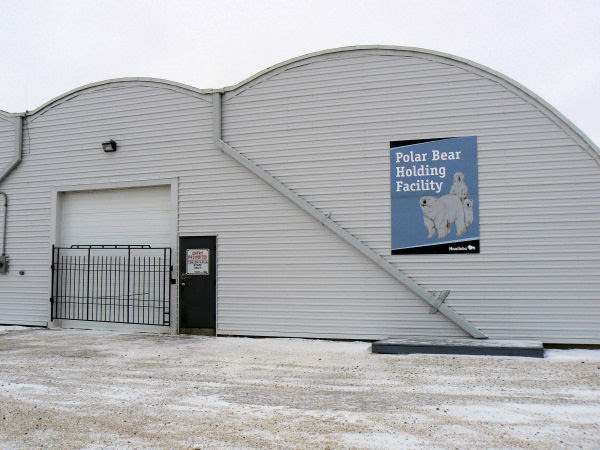Iceolation
The Canadian town of Churchill, Manitoba, is located on the southern shore of Hudson Bay, toward the north of the province. It's an interesting place for a few reasons; as Wikipedia mentions, it is "the only Arctic Ocean seaport connected to the North American railroad grid” and “there are no roads from Churchill leading to the rest of Canada.” But Churchill’s population is what sets it apart from the rest of the world. The town is home to about 800 to 1,000 people, and, for about six to eight weeks in the late fall, also to a similar number of polar bears.Including the handful which are locked up in Churchill's polar bear prison.
Polar bears subsist on a high-fat, high-protein diet consisting mainly of ringed seals. Each year, hundreds of polar bears make their way to the Churchill area in search of food -- the Bay is home to many ringed seals -- and when seals are hard to find, the bears go searching for food elsewhere. Often, this means there’s a polar bear or two walking around town. And if you’re a person, you may be mistaken for a meal. This, of course, is a bad thing -- for the people, at least.
In response, Manitoba has a group of “conservation officers” -- public officials who, like police officers, carry weapons and are trained and authorized to use them but, unlike police officers, are charged with keeping bears (not people) in check and, similarly, to protect the bear population. Call 675-BEAR and the six officers (or some subset of them) will be on-scene as soon as possible. But they won’t try and kill the bear, at least not immediately. Polar bears’ conservations status is “vulnerable” -- not quite “endangered” but certainly at risk for sliding toward extinction -- so whenever possible, conservation offers try to get the bear to leave town without having to wound or kill it.As NPR reported, “first, they will fire firecracker shells; then they move up to rubber bullets; and as a last resort, they'll move up to real bullets.”
Not all bears flee, of course, and those that don’t sometimes will still be docile enough to capture. And some bears who do flee initially will return, perhaps many times over. The conservation officials wanted to find a solution for these bears -- the ones who weren’t an immediate threat but could be at a moment’s notice -- and came up with the solution pictured below.

The sign says “Polar Bear Holding Facility,” but colloquially, this is Churchill’s -- and the world’s only -- polar bear jail. It’s a converted airplane hangar which is now used for the incarceration and rehabilitation of captured polar bears. Once safely inside, the polar bear prisoner is put through a 30-day program, teaching it to fear people. Conservation officer Bob Windsor explained the idea to the Guardian: "The bears that we deal with in our programme, we are teaching them to be scared of people. Every bear that we chase, maybe we are helping out somebody down the line that encounters a bear, because it recognises that that's a person – and that is something to be scared of."
Even if the program doesn’t work out, the good news is that polar bear loitering season is, relatively speaking, pretty short -- Churchill’s influx of quadruped residence begins in October and ends before the close of November. If a polar bear prisoner can’t be trained to avoid humans, the bear can still be saved -- Windsor and his team will airlift the bear, by helicopter (with the bear in a tethered net carried along), to points north, so that the bear in question can continue its migration without coming across any people.


No comments:
Post a Comment